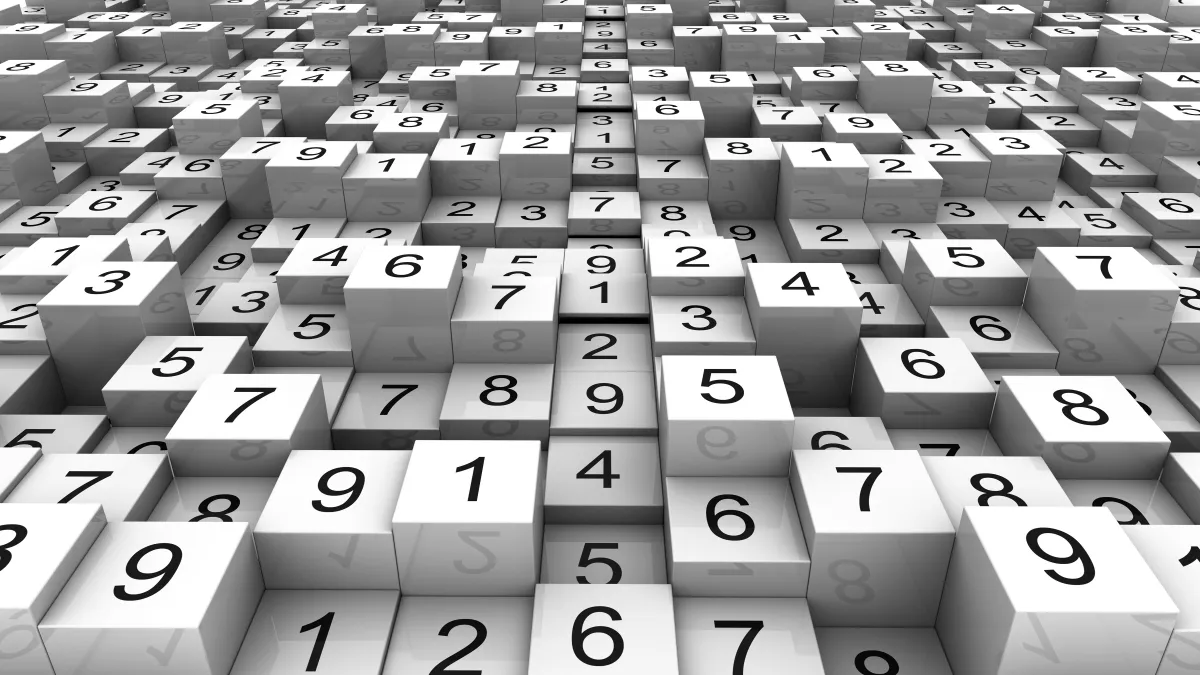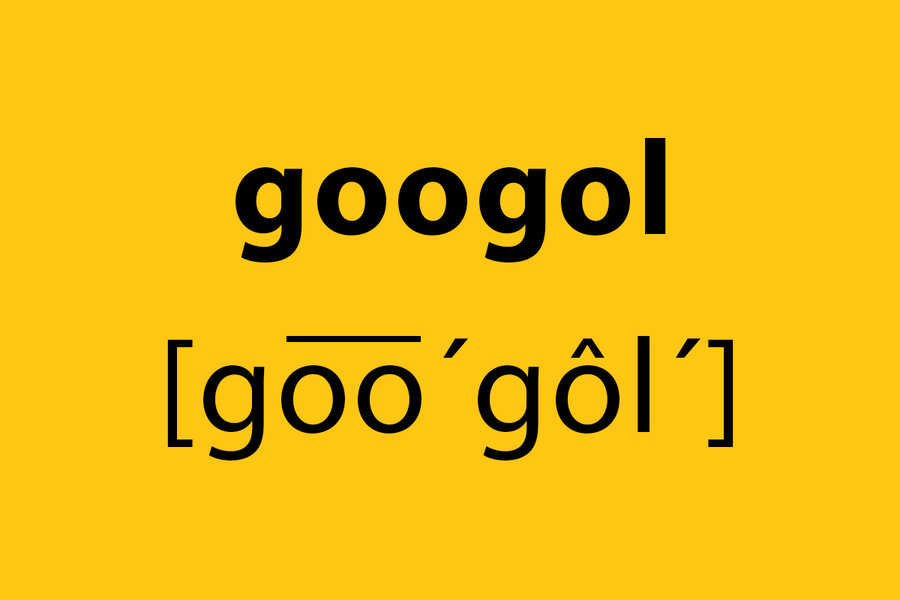Curiosity and confusion hit us when we name bigger numbers and count millions, billions, and trillions, and are left wondering “What comes after trillion?” Commonly we are only aware of the term trillion and do not know “What comes after trillion?” It’s a curious question that leaves us scratching our heads. In this blog we will answer this question and not only that, we will also share a list of names of larger numbers with their powers. Isn’t it interesting to know the names of all those vast numbers?
We won’t just stop at learning the names of these numbers, but we will get a bit deeper into some of the wonderful numbers and understand how to imagine them in this world. You will also know how these terms are called different in European and American regions. If you are curious to know this and expand your knowledge, keep reading!
Do Europeans and Americans use different names for big numbers?
Yes, they do. In Europe, people don’t ask “What comes after trillion?” They have another word for it. Let’s see what it is.
In the American system:
- Billion refers to 1,000,000,000 (10^9).
- Trillion refers to 1,000,000,000,000 (10^12).
In the European system (also known as the long scale):
- Billion refers to 1,000,000,000,000 (10^12).
- Trillion refers to 1,000,000,000,000,000,000 (10^18).
Why These Large Numbers are Needed?
Before we get to the question “What comes after trillion?” it’s important to know why we need these big numbers. Even though they are not useful in day-to-day life, they are important for macro levels. Here are some of the reasons.
1. Economics and Finance
- National Budgets: In big countries with strong economies, their budgets can go into the trillions. Using big numbers helps represent and handle these economic activities.
- Corporate Finances: Huge international companies also deal with financial numbers that go into the trillions. So, using these larger numbers is crucial to understand their finances better.
2. Population and Demographics
- When dealing with the world’s population, especially in the context of global trends, healthcare, and resource distribution, large numbers are essential. For instance, global estimates of healthcare needs, vaccination campaigns, or food production must accommodate billions of people.
3. Astronomy
- In astronomy, distances between celestial objects and their masses are often extremely large. The vastness of the universe requires scientists to work with numbers on astronomical scales. Light-years, parsecs, and masses of galaxies or black holes may be expressed in trillions or quadrillions.
4. Computing and Data Storage
- Data Volumes: With the increasing amount of digital data generated daily, storage capacities and data transfer rates are often measured in large units like terabytes, petabytes, and exabytes. Supercomputing tasks and simulations also involve massive datasets that require large numerical representations.
- Algorithm Complexity: Certain algorithms and computations, especially in scientific research or artificial intelligence, involve complex calculations that can result in extremely large or small numbers.
5. Statistics and Probability
- Combinations and Permutations: In statistics and probability theory, especially in fields like cryptography or data analysis, we consider all the different ways events or outcomes can happen, and we might end up dealing with really, really big numbers.
- Randomness and Probability: Expressing probabilities of rare events, especially in fields like risk assessment or insurance, we might use big numbers to make it easier to talk about these very small probabilities.
6. Physics and Quantum Mechanics
- Particle Physics: In particle physics, quantities such as energy levels, masses of subatomic particles, and other fundamental properties may involve extremely large or small numbers.
- Quantum Computing: Quantum computing often deals with large numbers of qubits and complex quantum states, requiring a high level of precision in numerical representation.
7. Engineering and Infrastructure
- Mega-projects, such as the construction of large-scale infrastructure like bridges, highways, or space missions, often involve budgets in the trillions. These numbers are necessary for accurate cost estimation and financial planning.
How Many Billions in a Trillion?

In the International number system, one trillion is represented as 1,000,000,000,000, signifying 12 zeros after the 1. On the other hand, one billion is written as 1,000,000,000, with 9 zeros following the 1.
By multiplying 1,000 (the numerical value of one trillion) by 1 billion, we arrive at the answer:
1,000×1,000,000,000=1,000,000,000,0001,000×1,000,000,000=1,000,000,000,000
Hence, there are one thousand billion in one trillion.
Knowing that there are one thousand billion in a trillion helps you understand the structure of numerical magnitudes in the context of the International number system. So, understanding this pattern will be an important aspect of knowing “What comes after trillion?”
What Comes After Trillion – List of Larger Numbers
Now that we have understood the basics, here is the list of number names that will answer your most curious question of “What comes after trillion?”
| Name | Power of 10 Notation |
| Million | 1 x 10^6 |
| Billion | 1 x 10^9 |
| Trillion | 1 x 10^12 |
| Quadrillion | 1 x 10^15 |
| Quintillion | 1 x 10^18 |
| Sextillion | 1 x 10^21 |
| Septillion | 1 x 10^24 |
| Octillion | 1 x 10^27 |
| Nonillion | 1 x 10^30 |
| Decillion | 1 x 10^33 |
| Undecillion | 1 x 10^36 |
| Duodecillion | 1 x 10^39 |
| Tredecillion | 1 x 10^42 |
| Quattuordecillion | 1 x 10^45 |
| Quindecillion | 1 x 10^48 |
| Sexdecillion | 1 x 10^51 |
| Septendecillion | 1 x 10^54 |
| Octodecillion | 1 x 10^57 |
| Novemdecillion | 1 x 10^60 |
| Vigintillion | 1 x 10^63 |
| Unvigintillion | 1 x 10^66 |
| Duovigintillion | 1 x 10^69 |
| Trevigintillion | 1 x 10^72 |
| Quattuorvigintillion | 1 x 10^75 |
| Quinvigintillion | 1 x 10^78 |
| Sexvigintillion | 1 x 10^81 |
| Septenvigintillion | 1 x 10^84 |
| Octovigintillion | 1 x 10^87 |
| Nonvigintillion | 1 x 10^90 |
| Trigintillion | 1 x 10^93 |
| Untrigintillion | 1 x 10^96 |
| Duotrigintillion | 1 x 10^99 |
| Ten-duotrigintillion (Googol) | 1 x 10^100 |
| Centillion | 1 x 10^303 |
| Googolplex | 1 x 10^(10^100) |
Now, we know the answer to “What comes after trillion?” Remembering and understanding these really big numbers can still be a bit tricky. We’re going to break down a few of these big numbers, so they become easier to understand.
Read More:- Betterme Reviews
What Comes After Trillion – Quadrillion

Here comes the main question, about which we have been discussing “What comes after trillion?” The simple answer to the question is a Quadrillion. A quadrillion is a number that contains 15 after 1. Here is it in numerical form – 1,000,000,000,000,000. In math language, we express it as 1×10^15.
What Comes After Trillion – Googol

After quadrillion, the next name we are going to look at is Googol. It is a number that has 100 zeroes after 1! The name “googol” was first used by an American mathematician named Edward Kasner in the early 20th century. Edward asked his nine-year-old nephew, Milton Sirotta, to come up with a name for this large number, and the name that came out of this interaction was “googol.”
With so many zeroes, it becomes difficult to imagine this number in our everyday life. So, to give you an idea of how big a googol is, think about the number of grains of sand on all the beaches in the entire world. A googol is even larger than that!
What Comes After Trillion – Googolplex
A googolplex is an even bigger number than a googol, to be precise googolplex is 10 to the power of a googol! In other words, to write out a googolplex, you would need to write 10^100 zeros! To give you an idea of how big a googolplex is, understand that it’s even larger than the total number of atoms in the entire observable universe. The size of a googolplex makes it impractical for most real-world uses. It’s more of a theoretical concept.
Know More:- Tradle
What Comes After Trillion – Skewes’ Number

We have seen some very large numbers like googol and googolplex but it doesn’t end there. There are even bigger numbers present and we have named them too. Skewes’ number is one of the larger numbers than even a googolplex. This number was developed by mathematician Stanley Skewes and named after him.
We can define Skewes’ number as 10 from the 10th to the 34th. Please take a look at its mathematical representation for more clarity: Skewer’s number = 1 x 10130
Skewes had a particular interest in prime numbers. Skewes’ number was introduced back in 1933. One of his colleagues defined it as the largest number that has ever served any definite purpose in mathematics. The theory may not stand true today. The exploration of even large numbers continues in mathematics, and new numbers and concepts are introduced.
What Comes After Trillion – Graham’s Number
Yes, there is an even larger number present than Skewes’ number and that’s the reason we said that new numbers are often introduced. Graham’s number was thought up by a mathematician named R.L. Graham. It’s so incredibly huge that regular math notation can’t handle it – it’s just too massive! And, we call it Graham’s number because it’s named after the mathematician who first told everyone about it.
Imagine you have a number, and you raise 3 to the power of 3, then take that result and raise 3 to the power of 3 again, and you keep doing this a total of 64 times. It creates an incredibly tall tower of threes!
G64=3↑3↑…3↑33G64=3↑3↑…3↑33
Now, this tower is so tall that if you were to write down the number of threes in it, the number itself would be unimaginably huge. It’s way larger than the total number of particles in the observable universe.
Conclusion
That’s all we have for now. We hope all these details helped you understand “What comes after trillion?” and the names of other bigger numbers. We also learned how Europeans and Americans name big numbers and why super huge numbers are important to us. Then as we got into more details like the list of names of bigger numbers and their powers, it helped us to find answers to questions like “how many billion in a trillion.” The sheer power these numbers hold is unimaginative and left us amazed. Let us know in the comments what new you learned from this blog, we would love to know.
FAQS
1. What comes after a trillion?
Ans – Quadrillion comes after trillion. It has 15 zeroes.
2. How much time will it take to count to a Trillion?
Ans – This is a very huge number, it will take approximately 31,709.79 years to count to a trillion.
3. Is a Zillion a real number?
Ans – No, a zillion is not a real number.


